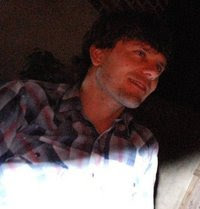High Noon was made in 1952. It was directed by Fred Zinnemann, written by Carl Foreman and stars Gary Cooper and Grace Kelly (who I just discovered was from Philadelphia; who knew!).
This was sitting on our DVD shelf for literally three or so months and I don't know why we never watched it until just last night. Get bent, Netflix. High Noon is on its way back to you now.
High Noon is the tale of the marshal of a small town, Will Kane (Cooper) who, on the day of both his retirement as a lawman and his wedding to a 30-years-his-junior Quaker pacifist/porcelain doll Amy (Kelly), is forced into a confrontation with the murderous marauder Frank Miller (Ian MacDonald) that he put away five years prior. Upon hearing his decision to return to his position as marshal until Miller is dealt with, Amy threatens to leave on the noon train out of town, and after a series of various personal confrontations, so does Kane's former lover (or as they call her in the picture, "friend"), Helen Ramirez (Katy Jurado). Kane spends most of the movie searching for people to populate his posse, an exercise in futility, and caps with a showdown with Miller and his gang of cutthroats at some particular time in the afternoon, a particular time which currently escapes my memory.
The film is quite a departure from what I consider the de rigeur story arc of a Western, and perhaps that is why I liked it as much as I did; it eluded my expectations quite deftly. I normally have a hard time understanding the purported charms of Gary Cooper, but he felt perfect as the wooden, stalwart straw man that he is called on to play in this. While he evokes the viewer's sympathy, it's also easy to see why all the townsfolk could care less if he gets blasted to bits by that guy who wrote Sin City. Kelly is an utter cipher in the bride role, as almost no background for the couple is provided. Their relationship, in fact, seems almost entirely manufactured to provide grist for the many moral conflicts that the movie whirs through. The unexplored yet seemingly more passion-filled relationship between Kane and his friend Ramirez, whose mahoganywood window-souls are as wide-set as those of the wisest owl, is much more intriguing. That so much of their past is obscured by the events of the day makes Ramirez' deep empathy for Kane a compelling component of the tale.
A lot of controversy followed this movie upon its release, and it was called "the most un-American movie [he'd] ever seen" by none other than the human incarnation of a star-spangled nutsack, John Wayne. The man-against-the-cowardly-world trope was supposedly a jab at both the fate of those persecuted by HUAC and those blacklisted during the high tide of the Red Scare. What's curious is that over time, the movie has come to be perceived rather as a one-against-the-world tale, showing that a single man with the spine of a Cooper can overcome almost all odds (with the aid of a [SPOILER ALERT] Quaker wife-turned-back blaster, of course). It is now one of the most historically loved movies by US presidents, most notably William Jefferson Clinton, who screened it a record 17 times over his tenure as prez.
Subscribe to:
Post Comments (Atom)

God I love this movie.
ReplyDeletewhat about the clocks! all those pictures of clocks! the movie takes place in real time: the time elapsed in the movie is roughly, or maybe even exactly, how long it takes the movie to play. I liked that cinematic device. It's like a tick-down to death. (If I remember 12th grade film history correctly.)
ReplyDeleteYeah, I really loved that as well. The device of real-time was totally played out in the early aughts, so I think I missed some of the novelty of it here.
ReplyDeleteI want to watch this again already.